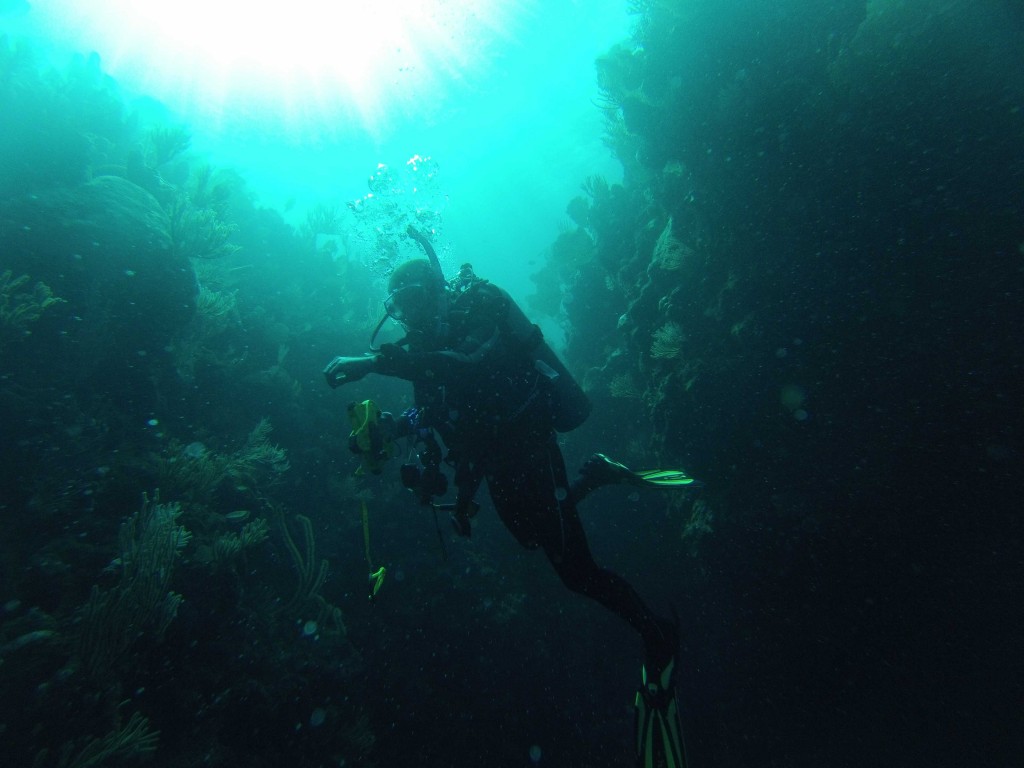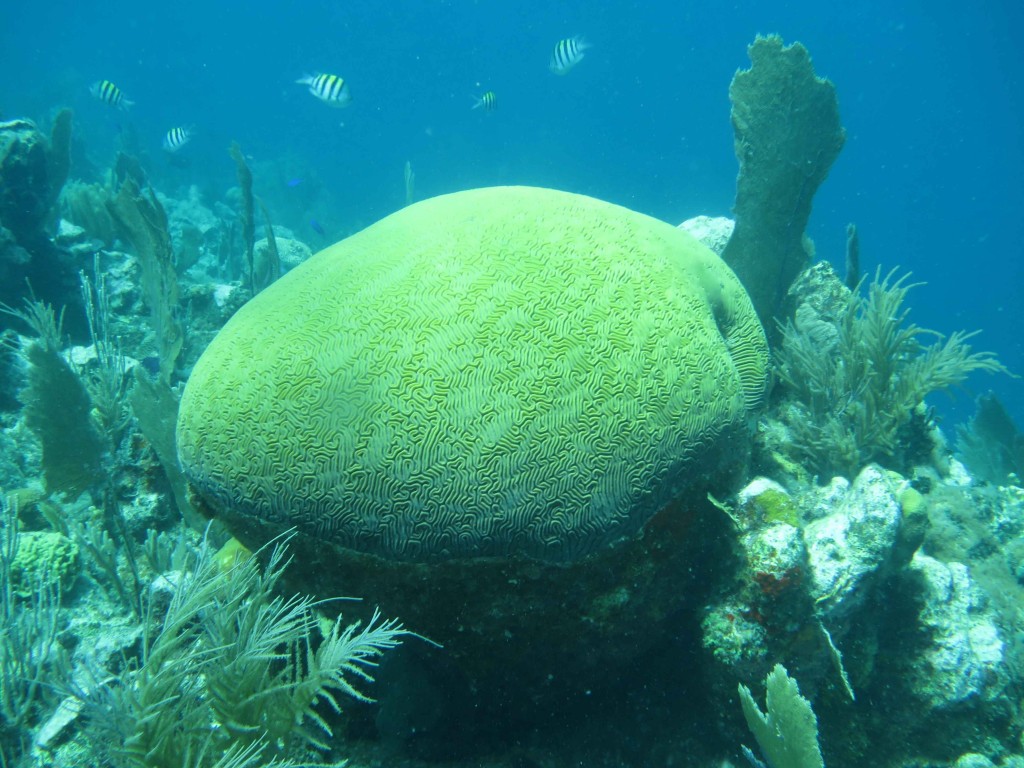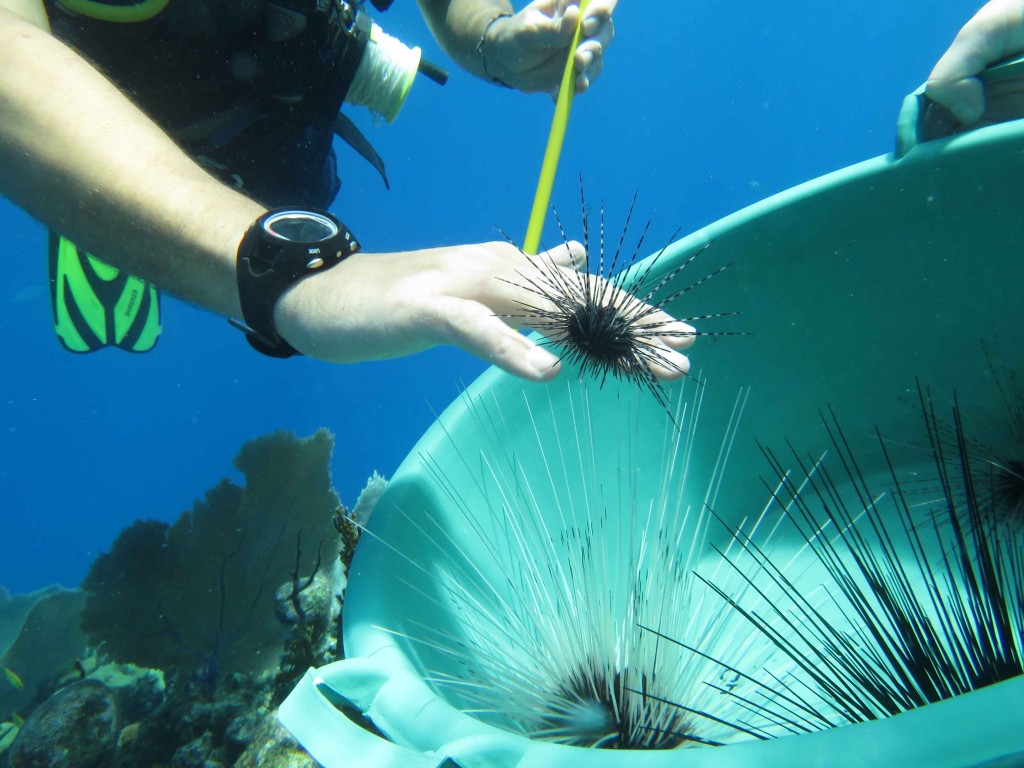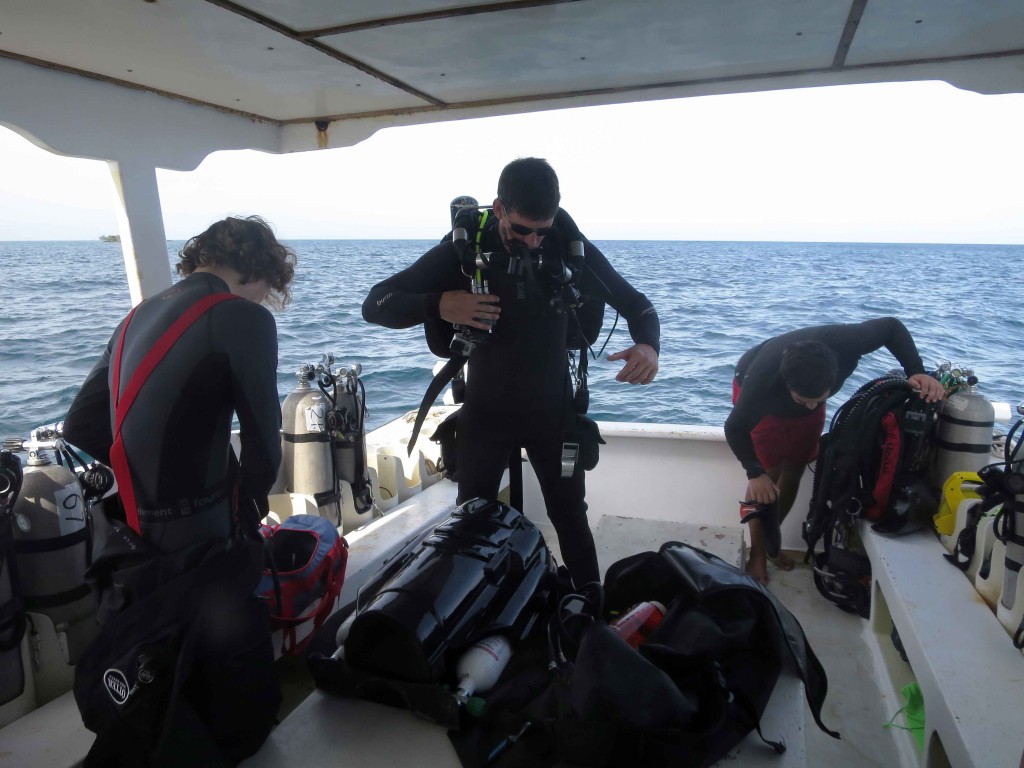Somerville Fellow Professor Alex Rogers leads the Ocean Research and Conservation group at the Department of Zoology, University of Oxford. His research team studies marine ecosystems that are hotspots of biological diversity in the oceans including in both deep-water and tropical shallow water reef ecosystems. He has written this short piece introducing mesophotic coral reefs and his expedition objectives.
Coral reefs are familiar to all of us as spectacular sunlit gardens of coral buzzing with fish and other marine life. Scientists are uncertain about just how many species live on shallow water coral reefs but they are acknowledged as one of the most biodiverse ecosystems of the ocean. They are also of huge value to humankind as a source of food, coastal protection, and livelihoods through the tourists they bring to many tropical countries. It is sad and, indeed, shocking to consider that these ecosystems are amongst the most threatened on Earth. This is because a range of direct human pressures, such as over fishing, destructive fishing practices and pollution and climate change are killing reefs throughout the world.
Much of the excess heat in the Earth system generated by greenhouse gas emissions is being absorbed by the oceans, warming them and causing a condition called mass coral bleaching which can be fatal for corals. Carbon dioxide, the main greenhouse gas emitted to the atmosphere by human activities such as burning of fossil fuels, is also dissolved in the ocean, lowering its pH in a process called acidification which also lowers the concentration of carbonate in seawater available for the corals to build their skeletons from. This year we are seeing the start of yet another major mass bleaching event coinciding with a severe El Niño, a natural phenomenon that occurs the Pacific that warms up the ocean and effects the climate globally. This event may rival that of 1997/1998 which is reported to have killed 16% of coral reefs globally.
It is not generally recognised that tropical coral reefs extend into deeper waters, below the depths of recreational SCUBA diving, down to as far as 150m or more. This twilight world is known as the mesophotic zone. As well as light being much reduced, temperatures are also lower and, it is thought, that corals are less exposed to human pressures, including conditions leading to mass bleaching (which requires high temperature and light). There has been speculation that corals and other reef-associated species living at mesophotic depths might reproduce and resupply shallow-water reefs with their larvae (offspring) and may therefore be important in the resilience of shallow-water reefs. This is known as the deep-reef refugia hypothesis (DRRH). Because mesophotic reefs occur below the depths of conventional SCUBA diving little is known about them although they may be as extensive as shallow-water reefs in terms of their distribution. However, recent developments in technical diving, including the use of closed-circuit rebreathers (CCRs), are now enabling divers to explore waters greater than 100m depth.
CCRs provide divers with a mix of oxygen, nitrogen and helium that enables them to dive to such depths without the threat of disabling levels of nitrogen narcosis or toxic levels of oxygen. The gas the diver breathes out is recycled enabling the long dive times required to spend time at depth and then to ascend in steps to rid the body of excess nitrogen and helium which has dissolved into the tissues while under pressure. Technical diving to mesophotic depths is not to be taken lightly and requires thorough training in the use of CCRs, careful planning of the dives and a larger dive team which includes support and rescue divers. However, the technology is now sufficiently developed to enable coral reef scientists to explore and study mesophotic coral reefs for the first time.
Over the last three years Alex’s research team, including D.Phil. students Dominic Andradi-Brown (funded by the Fisheries Society of the British Isles) and Jack Laverick (funded by NERC) have undertaken the training to use CCRs to depths of 100m, supported by the University of Oxford’s John Fell Fund. In collaboration with Operation Wallacea they have undertaken their D.Phil. studies in Utila, Honduras, working on shallow water and mesophotic reef ecosystems. This collaboration has also enabled Somerville biology students to go out to Utila to undertake projects as part of their degree course or broader training. This has culminated in the development of the Thinking Deep expedition which aims to explore mesophotic coral ecosystems off the island of Utila, Honduras, to address several important questions relevant to the deep-reef refugia hypothesis.
(i) How do coral communities change between shallow and mesophotic depths and is there evidence of population connectivity across the depth gradient?
(ii) How does the abundance and patterns of reproduction of the endangered coral Orbicella faveolata change in shallow versus deeper waters?
(iii) How do communities of reef-associated fish change between shallow to mesophotic depths and are populations connected across the depth gradient?
(iv) Do mesophotic reefs provide shelter for invasive indo-Pacific lionfish in the Caribbean from efforts to eliminate them using spear fishing in shallow water reefs?
To address these questions experts in technical diving and scientists from other institutions have teamed up with Alex, Jack and Dominic and are undertaking sample collection, video surveys and experimental manipulations from shallow to mesophotic depths. The expedition, which has been supported by the Royal Geographical Society, is pushing the boundaries of diving science employing many methods to study mesophotic coral reefs for the first time. Data gathered will provide evidence as to whether or not mesophotic reefs contribute to the resilience of reef ecosystems as a whole.
They will also inform scientists and reef managers as to the role of mesophotic reefs in the ecology of invasive lionfish which are predating native fish species, posing a threat to their persistence and ecological function on Caribbean reefs. This is important work as it may change ideas as to the vulnerability of coral reefs to human impacts. It will also mean that conservation measures aimed at protecting shallow-water reefs, such as marine protected areas (MPAs) will also need to be extended to include mesophotic reef ecosystems. The expedition is also an important landmark in understanding how to apply technical diving to the study of mesophotic ecosystems.
Like the Thinking Deep facebook page here to read the expedition diary.
Find more information on the Ocean Research and Conservation group here.



